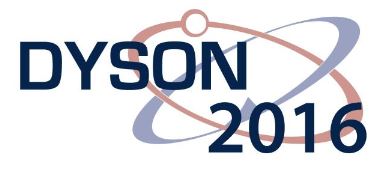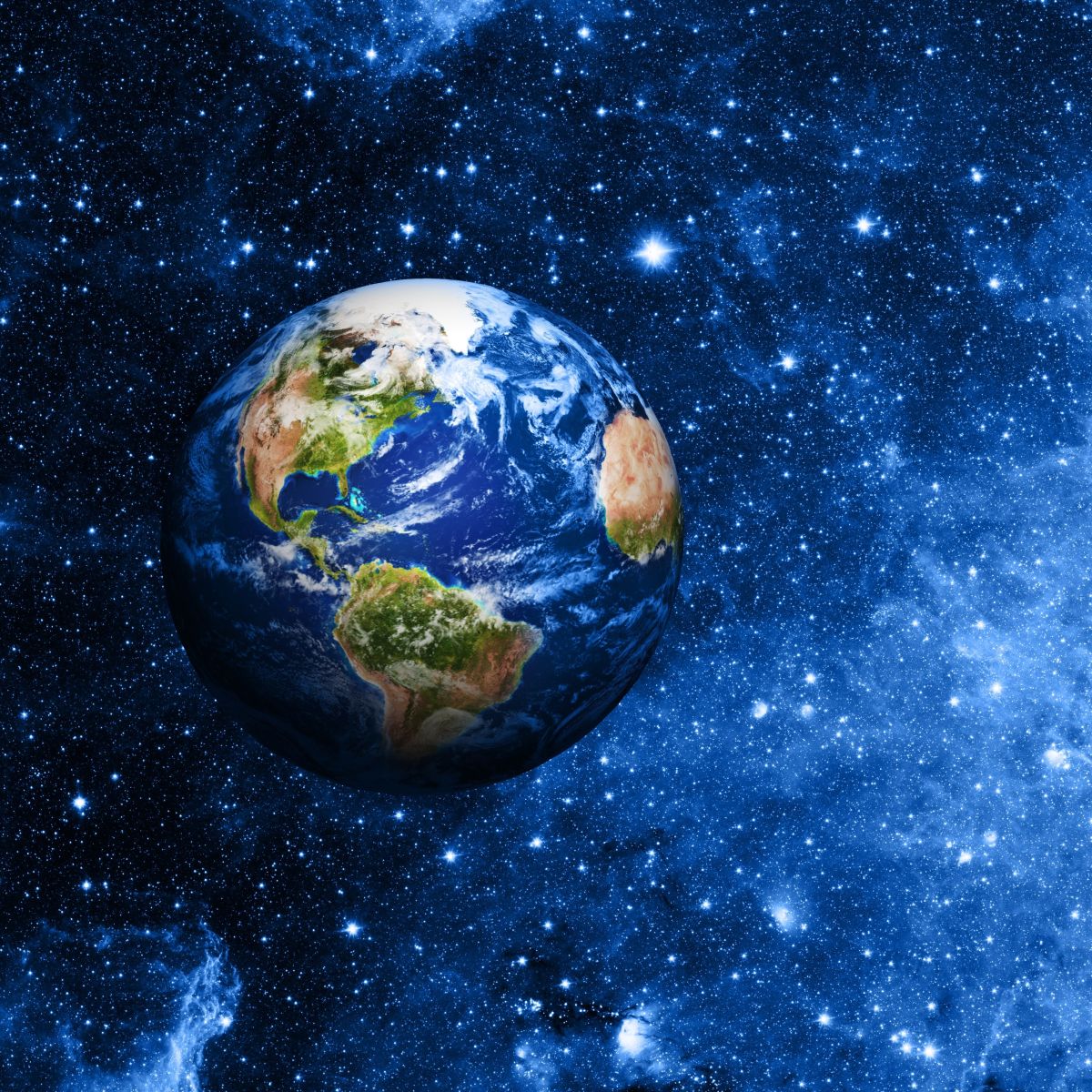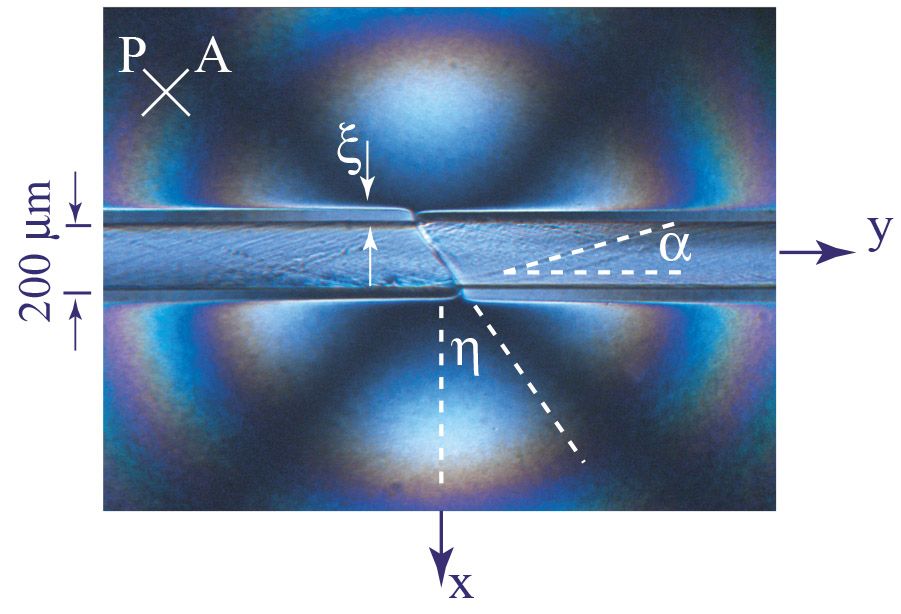News
EPJ D Colloquium: From nuclear to meso systems: how small is simple and how large is complex?
- Details
- Published on 25 April 2017

How small is simple and how large is complex? This is the question asked in a new Colloquium article by Jean-Patrick Connerade of Imperial College, published as part of the Topical Issue of EPJ D on Dynamics of Systems at the Nanoscale.
EPJ Plus Highlight - Proving Einstein right using the most sensitive Earth rotation sensors ever made
- Details
- Published on 21 April 2017

A new study use the most precise inertial sensor available to date to measure whether Earth partially drags inertial frames along with its rotation
Einstein’s theory of gravity, also referred to as General Relativity, predicts that a rotating body such as the Earth partially drags inertial frames along with its rotation. In a study recently published in EPJ Plus, a group of scientists based in Italy suggests a novel approach to measuring what is referred to as frame dragging. Angela Di Virgilio of the National Institute of Nuclear Physics, INFN, in Pisa, Italy, and her colleagues propose using the most sensitive type of inertial sensors, which incorporate ring lasers as gyroscopes, to measure the absolute rotation rate of the Earth.
EPJ E Highlight - Speed-dependent attraction governs what goes on at the heart of midge swarms
- Details
- Published on 18 April 2017

New study reveals swarm cohesion stems from an adaptive behaviour, where the faster individual midges fly, the stronger the gravitational-like force they experience
Ever wondered what makes the collective behaviour in insect swarms possible? Andy Reynolds from Rothamsted Research, UK, and colleagues at Stanford University, California, USA, modelled the effect of the attraction force, which resembles Newton’s gravity force, acting towards the centre of a midge swarm to give cohesion to their group movement. In a recent study published in EPJ E, their model reveals that the gravity-like attraction towards the heart of the swarm increases with an individual’s flight speed. The authors confirmed the existence of such an attractive force with experimental data.
EPJ B Highlight - Potential new applications stem from controlling particles’ spin configurations
- Details
- Published on 12 April 2017

Physicists prove important constraints for fermion gases with spin population imbalance
Fermions are ubiquitous elementary particles. They span from electrons in metals, to protons and neutrons in nuclei and to quarks at the sub-nuclear level. Further, they possess an intrinsic degree of freedom called spin with only two possible configurations, either up or down. In a new study published in EPJ B, theoretical physicists explore the possibility of separately controlling the up and down spin populations of a group of interacting fermions. Their detailed theory describing the spin population imbalance could be relevant, for instance, to the field of spintronics, which exploits polarised spin populations.
EPJ D Highlight - Reading between the lines of highly turbulent plasmas
- Details
- Published on 29 March 2017

Study shows how to identify highly turbulent plasma signatures in the broadening of the shapes of lines emitted by ions and atoms within
Plasma, the ionised state of matter found in stars, is still not fully understood, largely due to its instability. Astrophysicists have long-since sought to develop models that can account for the turbulent motions inside plasma, based on observing line shapes emitted by atoms and ions in the plasma. Turbulences are typically detected through the observation of broadened lines due to the Doppler effect, similar to the principle behind radar. In a new study published in EPJ D, Roland Stamm from the CNRS and Aix-Marseille University, France, and colleagues develop an iterative simulation model that accurately predicts, for the first time, the changes to the line shape in the presence of strong plasma turbulence. Ultimately, the authors aim to provide a system for assessing plasma turbulence that is valid for both a stellar atmosphere and the ITER tokamak designed to generate fusion energy. Line shapes are extensively employed as a powerful diagnostic tool for detecting turbulences in stable gases and plasmas. For many years now, astrophysicists have developed and employed models that gauge the effect of turbulent motions in the broadening of line shapes due to the Doppler effect. Such models are now also being employed to understand the role of turbulences in plasmas created to harvest energy from fusion.
EPJ Plus Highlight - Does the universe have a rest frame?
- Details
- Published on 21 March 2017

Experiment aims at resolving divergence between special relativity and standard model of cosmology
Physics is sometimes closer to philosophy when it comes to understanding the universe. Donald Chang from Hong Kong University of Science and Technology, China, attempts to elucidate whether the universe has a resting frame. The results have recently been published in EPJ Plus.
EPJB Colloquium: The continuous-time random walk, fifty years on
- Details
- Published on 17 March 2017
This Colloquium paper published in EPJ B by R. Kutner and J. Masoliver revisits the most significant achievements and future possibilities for continuous-time random walk (CTRW), a versatile and widely applied formalism.
EPJ E Highlight - Molecular scale transporter with a twist, powered by liquid crystal defects
- Details
- Published on 17 March 2017

Delivery of biochemical substances is now possible using a novel application of liquid crystal defects, forming a loop enclosing the substance travelling alongside twisted fibres
Defects that break the symmetry of otherwise orderly material are called topological defects. In solid crystals, they are called dislocations because they interrupt the regularly structured atom lattice. In contrast, topological defects called disclinations take the form of loops in liquid crystal of the nematic variety, whose elongated molecules look like a shoal of fish. New experiments supported by a theoretical model show how defects forming loops around twisted plastic fibres dipped in liquid crystal could be used for the transport of biochemical substances, when controlled by electric and magnetic fields. Published in EPJ E, these findings - achieved by Mallory Dazza from the Ecole normale supérieure Cachan, France, and colleagues - have potential applications in electro-optical micromechanical and microfluidic systems.
EPJ Data Science - View featured video: How teams and players stack up and why
- Details
- Published on 14 March 2017
“Winning is not a sometime thing; it’s an all the time thing. Winning is a habit,” said legendary American football coach Vince Lombardi.
Human sports and games, with their rules of competition and measures of performance, serve as an ideal test-bed to look for universal features of hierarchy formation. In a recent article published in EPJ Data Science, José A. Morales and colleagues study the behaviour of performance rankings over time of players and teams for several sports and games, and find statistical regularities in the dynamics of ranks. This finding dispels the commonly held notion that rank changes are due to the intrinsic strengths or qualities of teams and players. The same phenomenon may apply to more complex competition settings with further examinations.
Read more in the highlight of this article.
EPJ B Highlight - The secrets of vibration-enhanced conductivity in graphene
- Details
- Published on 07 March 2017

Physicists define a smart way of inducing large-amplitude vibrations in graphene models, which could open the door for novel electronic applications
Graphene, the one-atom-thick material made of carbon atoms, still holds some unexplained qualities, which are important in connection with electronic applications where high-conductivity matters, ranging from smart materials that collectively respond to external stimuli in a coherent, tunable fashion, to light-induced, all-optical networks. Materials like graphene can exhibit a particular type of large-amplitude, stable vibrational modes that are localised, referred to as Discrete Breathers (DBs). The secret to enhancing conductivity by creating DBs lies in creating the external constraints to make atoms within the material oscillate perpendicular to the direction of the graphene sheet. Simulations-based models describing what happens at the atomic level are not straightforward, making it necessary to determine the initial conditions leading to the emergence of DBs. In a new paper published in EPJ B, Elham Barani from the Ferdowsi University of Mashhad, Iran, and colleagues from Russia, Iran and Singapore use a systematic approach to identify the initial conditions that lend themselves to exciting DBs in graphene, ultimately opening the door to understanding the keys to greater conductivity.




